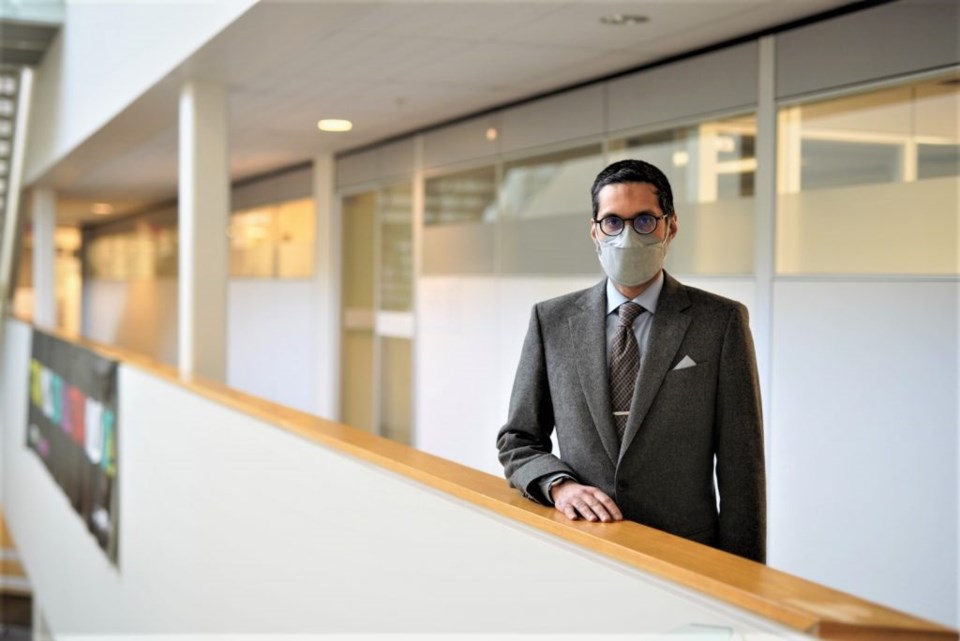
Given recent data, Dr. Mustafa Hirji is “cautiously optimistic” that we are on a downward trend of new COVID cases.
Wastewater testing is showing signs that infections are on their way down “a little bit,” across the province, and although we’re not quite there yet in Niagara, with numbers varying depending on the location of treatment plants, we could be getting there, Niagara’s acting chief medical officer of health said Monday.
The percentage of positive cases is definitely looking better provincially and in Niagara, falling from 20 per cent in recent weeks to 15 per cent, and there have been fewer outbreaks in the region of late, he said.
We’re also starting to see good news in hospitals across the province, but again, not quite so positive in the region, with Niagara Health still struggling with over-capacity. There is still a lot of work for the local health system to deal with in terms of COVID patients who are hospitalized, Hirji said, although those being treated primarily for COVID-19 “is a little flatter,” and it is more often a secondary diagnosis for those being treated with other illnesses.
“However, the number of people dying in Ontario and in Niagara is trending upwards, with deaths more frequent,” he said. Instead of one death every few days, it’s become one or two deaths from COVID every day.
He also spoke of the disparities between those with high and low incomes. Throughout every wave, the people who have the highest incomes are much less likely to die from COVID-19 than those with lower incomes, he said, having an unequal impact on society. “We really want to make sure our society is a place that is going to be serving everybody, not necessarily just a few who are well off, or who are younger, or who are lower risk.”
Hirji again stressed the importance of wearing masks, and of being vaccinated.
He joined his peers in other public health units in a letter to Ontario’s Chief Medical Officer of Health, Dr. Kieran Moore, last week, asking him to broaden his new section 22 order on masking. They expressed their concern for the “children missing school due to isolation, adults missing work due to exposure, employers struggling to operate due to COVID-19 related absenteeism, and people suffering from long COVID-19.”
Hirji is urging all residents of Niagara to continue to wear masks voluntarily in indoor spaces around others, and continues to recommend all organizations maintain their masking policies.
During Monday’s meeting, he cited a recent study that shows in mixed gatherings, unvaccinated people put those who are vaccinated at risk, while those who are vaccinated provide some protection for those who are not. “The safest place for people to be is around others who are vaccinated,” he said, pointing that out as a reason to bring back the proof-of-
vaccination mandate.
Studies also show three doses of vaccine provide better protection against being hospitalized, and also against being re-infected for those who have already had COVID.
On Tuesday, Niagara had 1,445 active cases in the region, and 116 in Niagara-on-the-Lake. The highest numbers were in the 20 to 59 age group.